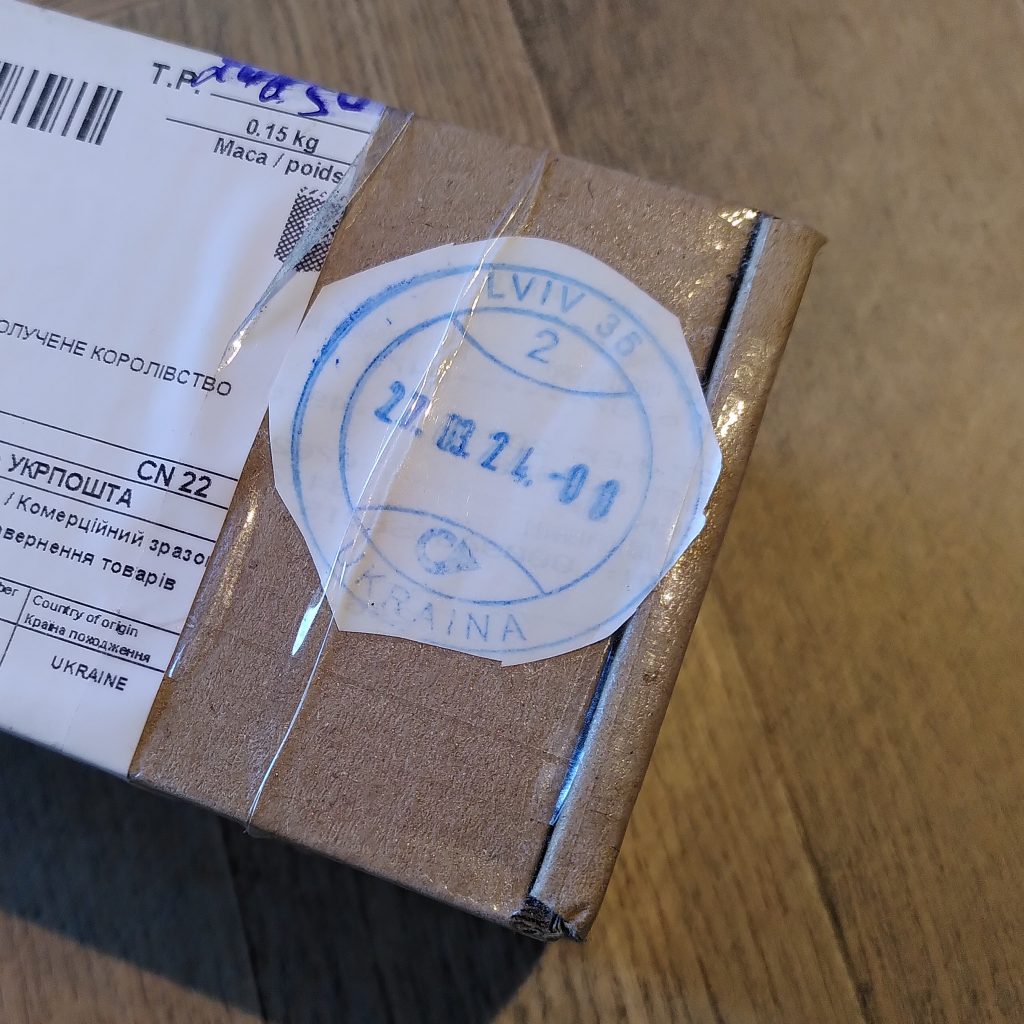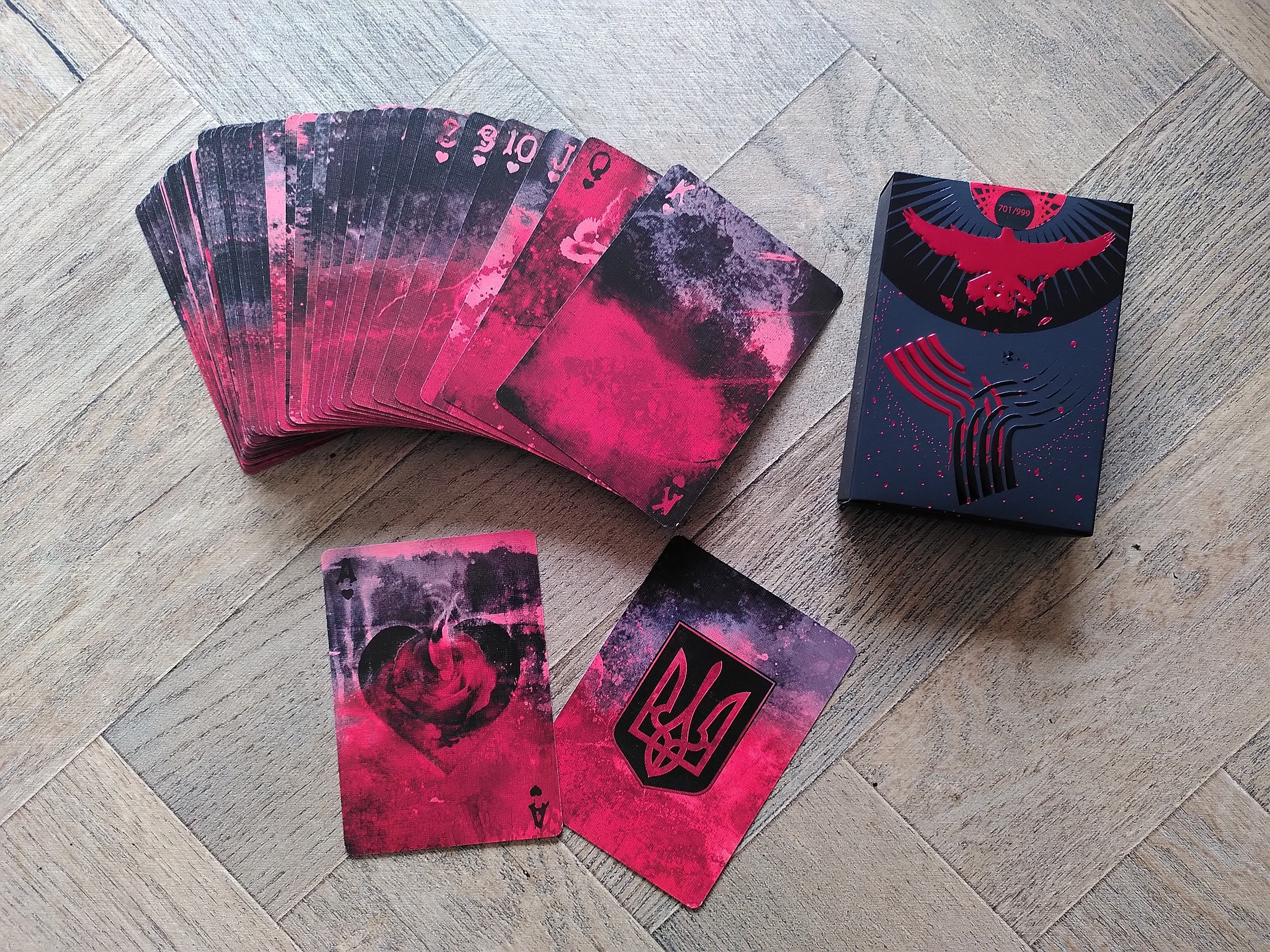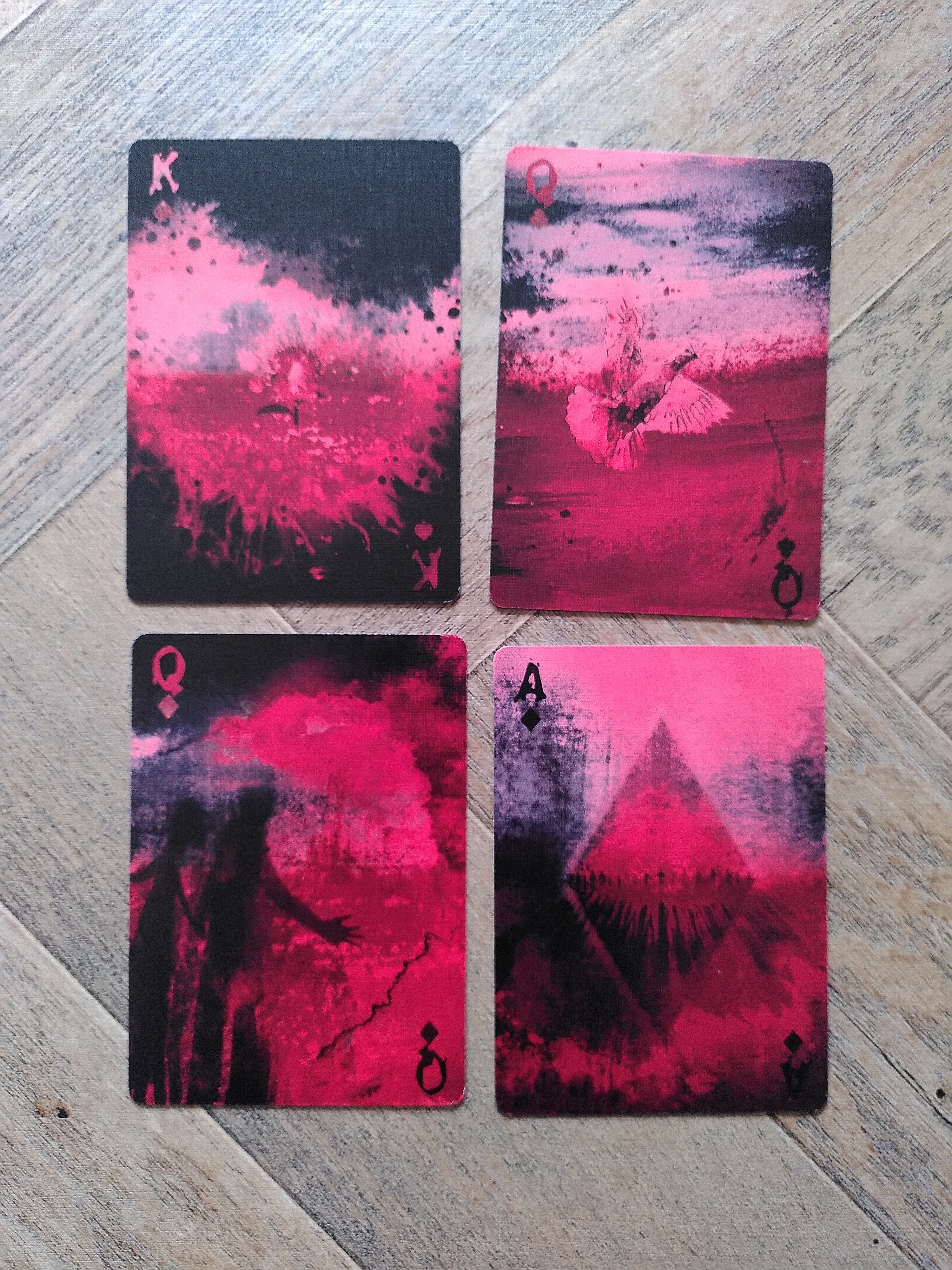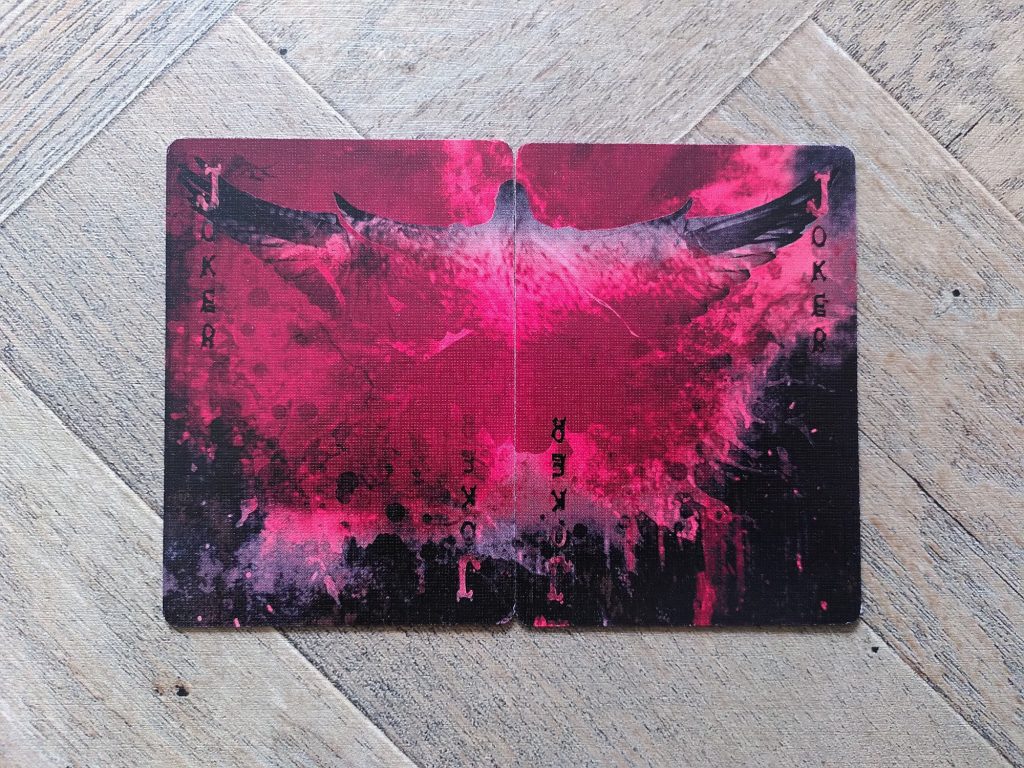One of the more sobering pieces of post this week – a parcel from Lviv, bearing a copy of the Resistance edition of the Clear Skies playing card deck from Ukrainian company Noir Arts.

I’ve previously bought a lovely couple of decks from Noir, and only realised where they were based after I’d communicated with their customer support to resolve an issue. They didn’t mention their location or that they’d literally been under missile attack from Russia the day before. I saw their website go down a few times, presumably due to power outages. The attacks continued. I didn’t hear back from my last message.
So it was refreshing and a relief to see the new Clear Skies decks in their new listings. The original Kickstarter page goes (deliberately and overtly) out of its way to say it’s not a fundraiser for a “cause”, and it’s definitely the most expensive cards I’ve ever bought. (Not that I’m a collector or anything, but I have a few decks I really like, as “objects”.) And as the page points out for the project, “the main risk is war.”

There is (or was) a Resistance edition available that includes a bullet shell picked up from the battleground, as well as another set with a fragment of missile or cluster bomb, to really bring things home. But honestly, the design of the cards, the reason for their existence, and the journey across Europe symbolised by the Lviv postmark are stark reminder enough.
It’s not a deck you can play with. I don’t mean technically play with – the design on the red and black edition is (just about) usable. I mean emotionally, this is not a deck that associates itself with play. The crimson and midnight patterns riff off the grim, gothic lust that permeates Western culture, but stays firmly rooted in real blood.

Among all of the consternation and xenophobia around the Brexit years in this country, the deck stands out. The deck is not a deck, but a focusing point for all of the fear and upset haunting the continent right now. It is a memorial to those who can no longer draw their hand, and to a land with less certainty than a poker game. It is (moreso with’ Freedom’, its twin) a glimmer of hope among randomness. It is a middle finger to disruption, proof that frivolity and basic luxuries like games can still be made and played.
I almost didn’t write this post. There’s a risk that it can come across as war porn, or as misplaced emotional fetishism, an upper-middle class chance to take pleasure in Things at the expense of Politics and Real Life.
But it’s also often the small things that connect us across boundaries – ones which are being walled up and reinforced with each passing election. Items in museums transport us from one world to another in the same way. I’m reminded of the Gameboy that survived a bombing in the Gulf War, and all of those artifacts of war that we often take for granted in our own sense of history.
Against decades of capitalism seeking to hide the source of production from us, it feels rehumanising to join together consumption with individuals and their social, political contexts – their reasons for making something in the first place. Increasingly, items are often no longer just items. Their presence can be more important than their practicality.
If you fancy supporting a small Ukrainian company making delicate items in the middle of a warzone, check out the links above.

Leave a Reply